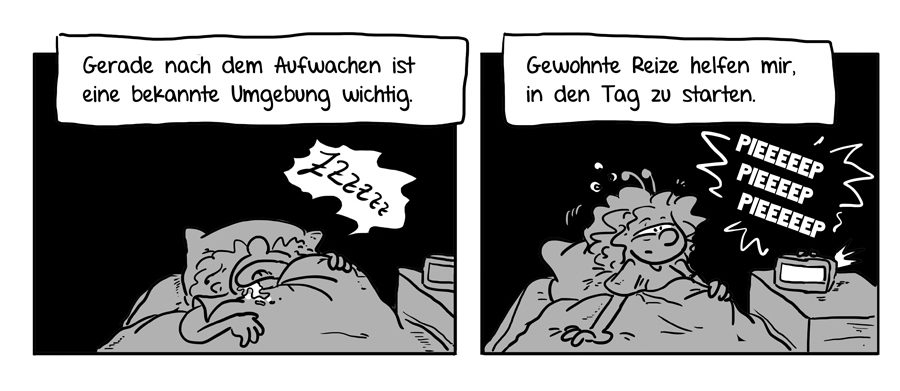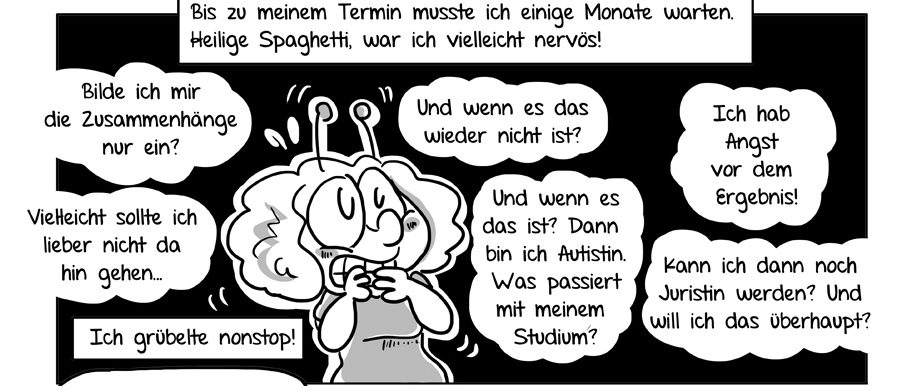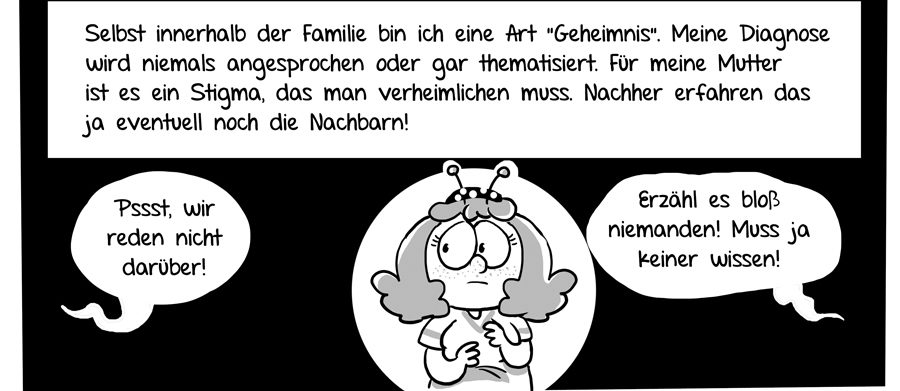In her “Schattenspringer” comics, Daniela Schreiter portrays how she and other people with Asperger syndrome cope with their condition, which makes them feel as if they have “landed on the wrong planet”. Her art helps her come to terms with serious real-life experiences.
By Stefan Pannor
At a glance
Daniela Schreiter was born in West Berlin in 1982. She studied law in Berlin from 2003 until 2008. She was diagnosed in 2009 with Asperger syndrome, a special form of autism. Typical symptoms are oversensitivity and a sense of isolation. In 2012 she began engaging with her experiences in her
Schattenspringer comics, which initially appeared online.
A difficult decision
The cartoonist explains that she thought long and hard about whether she should talk about her condition and publish her comics online. “People with autism have to fight against a lot of prejudice and discrimination, especially in their working lives”, says Schreiter. What is more, working on the comics was emotionally difficult for her: “I experienced many flashbacks, particularly to childhood experiences. I frequently had to take a break before I could continue with my drawing.”
A special work
“People with Asperger syndrome often feel that they have landed on the wrong planet” is how Schreiter introduces her reminiscences in the comic. She explains how she was bullied and ostracized at school because she was unable to understand the social codes of her fellow pupils, and how she had to battle with breakdowns because her oversensitivity posed an excessive burden on her nervous system. To lessen the tragic quality of the subject matter, Schreiter repeatedly portrays herself in her comics as a clumsy oaf. She uses self-mockery and seriousness in equal measure: “This provides an easier way into this serious subject, and reduces the inhibitions people have about engaging with it.”
-
 © Daniela Schreiter/Panini
© Daniela Schreiter/Panini
Typical symptoms of Asperger syndrome are oversensitivity and a sense of isolation.
-
 © Daniela Schreiter/Panini
© Daniela Schreiter/Panini
Schreiter thought long and hard about whether she should talk about her condition. It has helped her be more open in the way she deals with her own problems and limitations, however.
-
 © Daniela Schreiter/Panini
© Daniela Schreiter/Panini
She experienced many flashbacks while working on the comic, particularly to childhood experiences. “I frequently had to take a break before I could continue with my drawing”, she explains.
-
 © Daniela Schreiter/Panini
© Daniela Schreiter/Panini
The experience also made her stronger. In “Autistic Hero-Girl” she appears as the eponymous superhero.
Acknowledgement from others
This also applies to others who are affected by the condition. “I am in contact with many people with autism, especially via social media.” She explains that publishing her own memories in the form of a book helped her obtain permission to portray the experiences of other people in subsequent volumes of the
Schattenspringer comic. “I wanted to show that the autistic spectrum is wide and that each person with autism is different.”
The Asperger superhero
And she herself? “I am now more open in the way I deal with my problems and my limitations.” This new self-confidence gave rise to
Die Abenteuer von Autistic Hero-Girl (i.e.
The Adventures of Autistic Hero-Girl), in which Schreiter uses the devices of the superhero comic to portray her battle with the syndrome. The short episodes derive their wit and humour from the way in which the autistic superhero handles everyday situations such as shopping or noisy neighbours.
In the artist’s own words
“Since publishing the comics, I have lived a freer life and no longer try as hard to pretend to be different.”




